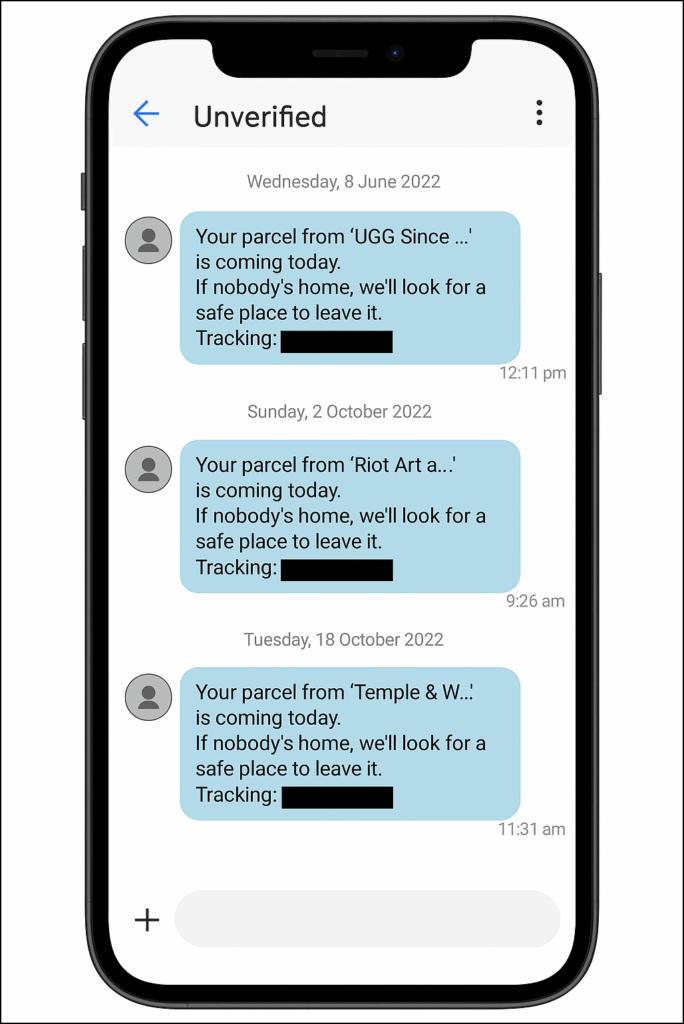Share article:
Navigating new ACMA rules: A guide to compliant SMS marketing in Australia

SMS is a powerful way to communicate with customers since most are essentially glued to their devices daily. In 2024, mobile phones were the most commonly used device by Australian adults to access the internet, with 92% of them doing so multiple times a day.
If you’re currently or planning to use business texting in Australia, you should know that it has its own rulebook. You can’t send any message to anyone, any time. The Australian Communications and Media Authority (ACMA) has the Spam Act 2003, which requires explicit consent, clear sender identification, and a simple, low-cost opt-out in every message.
And there’s another layer coming soon: A mandatory SMS Sender ID Register is rolling out on 15 December 2025.
If you use an alphanumeric sender name (basically, your brand name in the “from” field), you’ll need to register it or risk your messages being flagged and blocked. Here’s a helpful overview of SMS rules in Australia, including the new ACMA rules rolling out this year.
This is not legal advice. This information is provided for general informational purposes only and should not be construed as legal advice or a substitute for consultation with qualified legal counsel or your organization’s compliance professionals.
A quick background on SMS regulations in Australia
What is ACMA?
ACMA is the Australian Communications and Media Authority, a.k.a. the regulator that polices business texting. If you send commercial SMS in Australia, ACMA sets the rules and enforces them under what’s known as the Spam Act 2003.
To text customers legally, you need three things every time:
- Explicit consent (so no sneaky, pre-ticked boxes)
- Clear sender identification
- An easy, low-cost opt-out in every message
How ACMA texting rules impact businesses
In practice, this means you should be incorporating consent language right into your forms and checkout. You have to make it crystal clear what people are signing up for and keep a simple log of when and how each person opted in.
Every SMS should also say who it’s from and give an easy get out clause, like “Reply STOP to opt out.” When someone opts out, you must remove them from your list straight away.
What you need to know about new ACMA rules in Australia for texting
From 15 December 2025, Australia will have a mandatory SMS Sender ID Register.
This means if you send texts using your brand name in the “from” field, you’ll need to register that name.
If you don’t, your sender ID might show up as “unverified” or “likely SCAM” and messages can (and most likely will) be blocked. This will have a direct impact on deliverability, but obviously the more important issue is that you stay compliant under these new rules.

About Australian SMS Sender ID Registry
Why it matters
If you don’t register your sender names, your messages could be marked as spam and ultimately blocked from getting where they need to go. That hurts delivery, damages brand trust, and wastes campaign spend.
The idea behind the registration is that it helps carriers and customers recognise that the message really is from you.
Who’s at risk?
The ACMA new texting rules apply to any business using alphanumeric sender IDs to text people in Australia, whether you’re sending promos, alerts, or reminders. If you use short/long codes instead, you still have to follow the core rules as above: consent, clear identification, and a low-cost opt-out in every message.
What should you do and when?
- Now: Audit all sender names you use in AU, decide which to keep, and map them to the right business entities.
- Before 15 Dec 2025: Register each alphanumeric sender ID. Update templates so your brand name and opt-out line are crystal clear and train your team.
- After go-live: Monitor delivery and any on-device labelling. If a label looks off, investigate quickly and keep your consent/opt-out processes tight.
Tip: Keep a central list of sender IDs, owners, and use cases. Standardise naming (avoid lookalikes), and make sure they match across all your platforms (e.g., POS, helpdesk, marketing). Keep proof of consent and make sure you remove opt-outs from your lists immediately.
The importance of consent is SMS marketing in Australia
While the main reason for getting consent is compliance with the rules and regulations in Australia, there’s a secondary benefit for brands. People actually engage more when they know they’ve expressly signed up and can leave at any time. SMS works best when it’s transparent and permission-based.
Examples of opt-ins and opt-outs
Here are some tried-and-tested ways you can get explicit consent from customers and give them the opportunity to opt-out if they want.
Opt-in:
- A checkout or website form with an unticked SMS box and clear wording that says something like, “Yes, text me order updates and offers.”
- A keyword flow where a customer can text “YES” to join and your confirmation message repeats what they’ll receive and how to opt out.
- Signed T&Cs that clearly cover SMS and link to your privacy policy.
- Double opt-in for promo lists: form submit > confirm via SMS “YES.”
- In-store posters or QR codes that spell out what you’ll send and how to opt out.
- After offering customer support, ask if they’d like delivery alerts or service reminders by SMS and make sure you record the “yes.”
Opt-out:
- Delivery update: “Hi Sam, your Apple order #1234 has shipped. Track: [link]. Reply STOP to opt out.”
- Appointment reminder: “Reminder: Dr. Patel, Tue 10:30am, 12 High St. Change: [link]. Reply STOP to opt out.”
- Promotion: “Sam, 20% off trainers till Sun. Shop: [link]. Reply STOP to opt out.”

What happens if you don’t get consumer consent for SMS?
Short answer: you’re asking for trouble.
No consent means you’re non-compliant, which puts you at risk of ACMA action, and your texts are more likely to be filtered, blocked, or just plain old ignored.
With the new SMS Sender ID Register rolling out, it’ll be even clearer who’s sending what. Messages that look unauthorised or non-compliant can be labelled “Unverified” or “Likely SCAM,” or not delivered at all. Not a great look, but an easy problem to avoid with proper opt-in.
New ACMA guidelines for Australia: texting checklist
- Count your Sender IDs. Pull a list of every alphanumeric sender name you use in Australia (marketing, CX, stores, etc). Merge duplicates and get rid of lookalikes. Ideally, choose one primary brand ID.
- Register the ones you’ll keep. Pick an internal owner, grab your ABN/ACN, and register each ID before 15 Dec 2025. Save the approval emails and write a quick “how we register new IDs” note for future you.
- Fix your templates. Make it obvious who the text is from and include a clear opt-out line in every message. Test on a few common phones and carriers, and ditch any old copy that hides the opt-out.
- Tighten consent. Use unticked boxes and plain-English wording on forms/checkout. If you use keywords, make “YES” the join action and confirm what they’ll get. Log when, how, and what they agreed to.
- Automate opt-outs. Make “STOP” suppress that number right away across all tools, including your marketing platform, POS, and helpdesk. Send a short confirmation (“You’re opted out”) and make sure they’re removed from all lists.
- Teach your team. Give marketing, customer success, and store staff a one-pager that includes when they can text, any approved templates, how to capture consent, and what to do with opt-outs.
- Keep a close eye on things after you go-live. Monitor delivery, replies, complaints, and any labels that show on devices. If you ever see “Unverified” or “Likely SCAM,” raise it immediately with your provider and investigate.
How SMS platforms like MessageMedia make compliance easier
Keeping up with constantly changing regulations can be challenging, but it’s much easier with a trusted, compliant SMS platform.
While you are always responsible for registering your alphanumeric sender ID and taking the necessary steps to meet ACMA compliance obligations – our complete SMS platform makes it easy to incorporate compliant sending practices into your texting strategy.
Some features and support we offer that help with ACMA compliance include:
- Initiating registration on your behalf
- In-app reminders for upcoming registration deadlines
- Built-in opt-in and opt-out tools
- Automated list management
- 24/7 local support
And what’s even more reassuring: Many brands who work with us have seen that compliance doesn’t mean sacrificing performance. Our conversational SMS customers have achieved 12% CTRs and 15% reply rates, all while staying fully ACMA-compliant.
For more comprehensive details on ACMA’s new updates, please refer to the ACMA’s official website or our support article.
And if you’re ready to explore how Sinch MessageMedia can help your business with smarter SMS, book a demo or try our platform for free.
